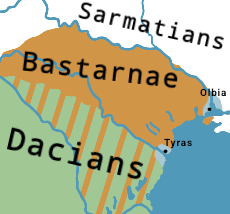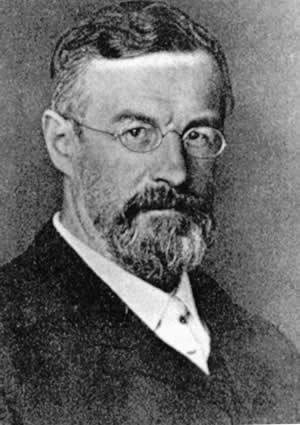
In Gallo-Roman religion, Ancamna was a goddess worshipped particularly in the valley of the river Moselle. She was commemorated at Trier and Ripsdorf as the consort of Lenus Mars, and at Möhn as the consort of Mars Smertulitanus. At Trier, altars were set up in honour of Lenus Mars, Ancamna and the genii of various pagi of the Treveri, giving the impression of Lenus Mars and Ancamna as tribal protectors honoured in an officially organized cult. Among the few statuettes left as votive offerings at the sanctuary of Mars Smertulitanus and Ancamna at Möhn is one of a genius cucullatus like those offered to the Xulsigiae at the Lenus Mars temple complex in Trier.

Regat Germans or Old Kingdom Germans are an ethnic German group of the eastern and southern parts of Romania. The Regat is a Romanian-language term ascribed for the initial territorial extent of the Kingdom of Romania before World War I, roughly the regions of the current state of Romania to the south and east of Transylvania.

The German Archaeological Institute is a research institute in the field of archaeology. The DAI is a "federal agency" under the Federal Foreign Office of Germany.

Oroles was a Dacian king during the first half of the 2nd century BC.
A numerus was a unit of the Roman army.
This is a timeline of Romanian history, comprising important legal and territorial changes and political events in Romania and its predecessor states. To read about the background to these events, see History of Romania.

Hercules' Club is a Roman Empire and Migration-era artefact type.

Ernst Christian Andreas Martin Fabricius was a German historian, archaeologist and classical scholar. Between 1882 and 1888 he participated in excavations in Greece and Asia Minor and also pioneered German research on the Roman Empire border defenses known as the Limes Germanicus.

Richard Wagner was a Romanian-born German novelist. He published a number of short stories, novels and essays.
Joachim Werner was a German archaeologist who was especially concerned with the archaeology of the Early Middle Ages in Germany. The majority of German professorships with particular focus on the field of the Early Middle Ages were in the second half of the 20th century occupied by his academic pupils.

The Helmet of Iron Gates is a Geto-Dacian silver helmet dating from the 4th century BC, housed in the Detroit Institute of Arts, United States.
Ernst Sprockhoff was a German prehistorian and inventor of the Sprockhoff numbering system for megalithic monuments in Germany.
The Rudolf Virchow lecture was an annual public lecture delivered by an eminent researcher in the field of Palaeolithic archaeology in Neuwied (Germany). The lecture was held in honour of the German physician, archaeologist and politician Rudolf Virchow and his contributions to German archaeology, whilst at the same time also honouring the outstanding accomplishments of the invited speaker. The lecture series was discontinued after 2016, when a new price, THE HUMAN ROOTS AWARD was established to recognise significant achievements that have had an outstanding impact or great influence in understanding the archaeology of human behavioural evolution.
Rolf Hachmann was a German archaeologist who specialized in pre- and protohistory.

The Roman camp at Marktbreit is a castrum with a nearby canabae from the period of Emperor Augustus. It is located in the municipal territory of the Lower Franconian town of Marktbreit on the left bank of the River Main, in the district of Kitzingen inside the German state of Bavaria.

The Neckar-Odenwald Limes is a collective term for two, very different early sections of the Upper Germanic-Rhaetian Limes, a Roman defensive frontier line that may have been utilised during slightly different periods in history. The Neckar-Odenwald Limes consists of the northern Odenwald Limes (Odenwaldlimes), a cross-country limes with camps, watchtowers and palisades, which linked the River Main with the Neckar, and the adjoining southern Neckar Limes (Neckarlimes), which in earlier research was seen as a typical 'riverine limes', whereby the river replaced the function of the palisade as an approach obstacle. More recent research has thrown a different light on this way of viewing things that means may have to be relativized in future. The resulting research is ongoing.
The Main Limes, also called the Nasser Limes, was built around 90 AD and, as part of the Upper Germanic-Rhaetian Limes, formed the frontier of the Roman Empire in the area between the present day villages of Großkrotzenburg and Bürgstadt. In this section the limes adjoined the River Main (Moenus), which forms a natural boundary for about 50 kilometres here, so "Main" refers to the river.
Wilhelm Unverzagt was a German prehistorian and archaeologist.
Jürgen Oldenstein is a German provincial Roman archaeologist.
Joachim Herrmann was a German historian, archaeologist, scientist, and institutional director. He was a noted scholar in East Germany (GDR) who specialized in Slavic archaeology, but with ambivalent legacy, as his career and research was politically motivated because of which he "deliberately distorted the view of history".













